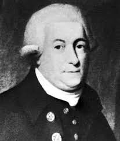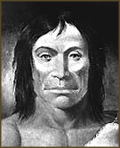The Making of the 50 States: Washington
Part 1: In the Beginning Among the Native Americans tribes who lived in what is now the State of Washington were the Cayuse, Chinook, Clallam, Clatsop, Colville, Lummi, Makah, Nez Perce, Nisqually, Nooksack, Okanogan, Palouse, Puyallup, Quinault, Salish, Snohomish, Spokane, Walla Walla, Wenatchee, and Yakima. 
The first European to claim what is now Washington was Sir Francis Drake, in 1579. Nearly 200 years later, after little European exploration, Bruno Heceta claimed the area for Spain, in 1775. British explorer James Cook sailed through in 1778; his countryman David Thompson, who also explored Oregon, traveled down the Columbia River. Another British explorer, George Vancouver (left), arrived in 1792 and spent two years mapping the coastline, naming Puget Sound for one of his officers. Also arriving in 1792 was American Robert Gray, who named the Columbia River. Exploration and settlement increased after the arrival of Meriwether Lewis and William Clark in 1805. As with many western states, Washington's first settlers were fur traders, the most famous of which was John Jacob Astor, whose Astoria trading post was up and running by 1811. The first permanent American settlement followed, at Fort Okanogan. Great Britain and the U.S. agreed in 1818 to maintain joint ownership of the area. Also about this time, Dr. John McLoughlin of the Hudson's Bay Company established Fort Vancouver. Fort Colvile followed. 
The more settlers arrived, the more conflict between them and Native Americans. One particularly violent dispute between American settlers and Native Americans was the Cayuse War, which resulted in great numbers of losses on the Cayuse side. An 1836 mission established by Marcus and Narcissa Whitman resulted in a large influx of settlers. Unfortunately, it also resulted in a measles epidemic. The Native American children in the area were now immune, and many died; deaths among the American colonist community were few. Cayuse Chief Tiloukaikt (right) blamed the settlers and killed 14 settlers, including the Whitmans. The settlers retaliated, and the result was the Cayuse War, which lasted from 1847 to 1855. Washington was not part of the Louisiana Territory and so did not become French; rather, it was English since the arrival of Cook and then shared between Great Britain and the United States in 1846, when the Oregon Treaty gave the area exclusively to the U.S. In 1848, what is now Washington became part of the Oregon Territory, which also included all of what is now Idaho, all of what is now Oregon, and parts of both of what is now Washington and what is now Wyoming. Next page > The Rest of the Story > Page 1, 2
|
|
Social Studies for Kids
copyright 2002–2024
David White




